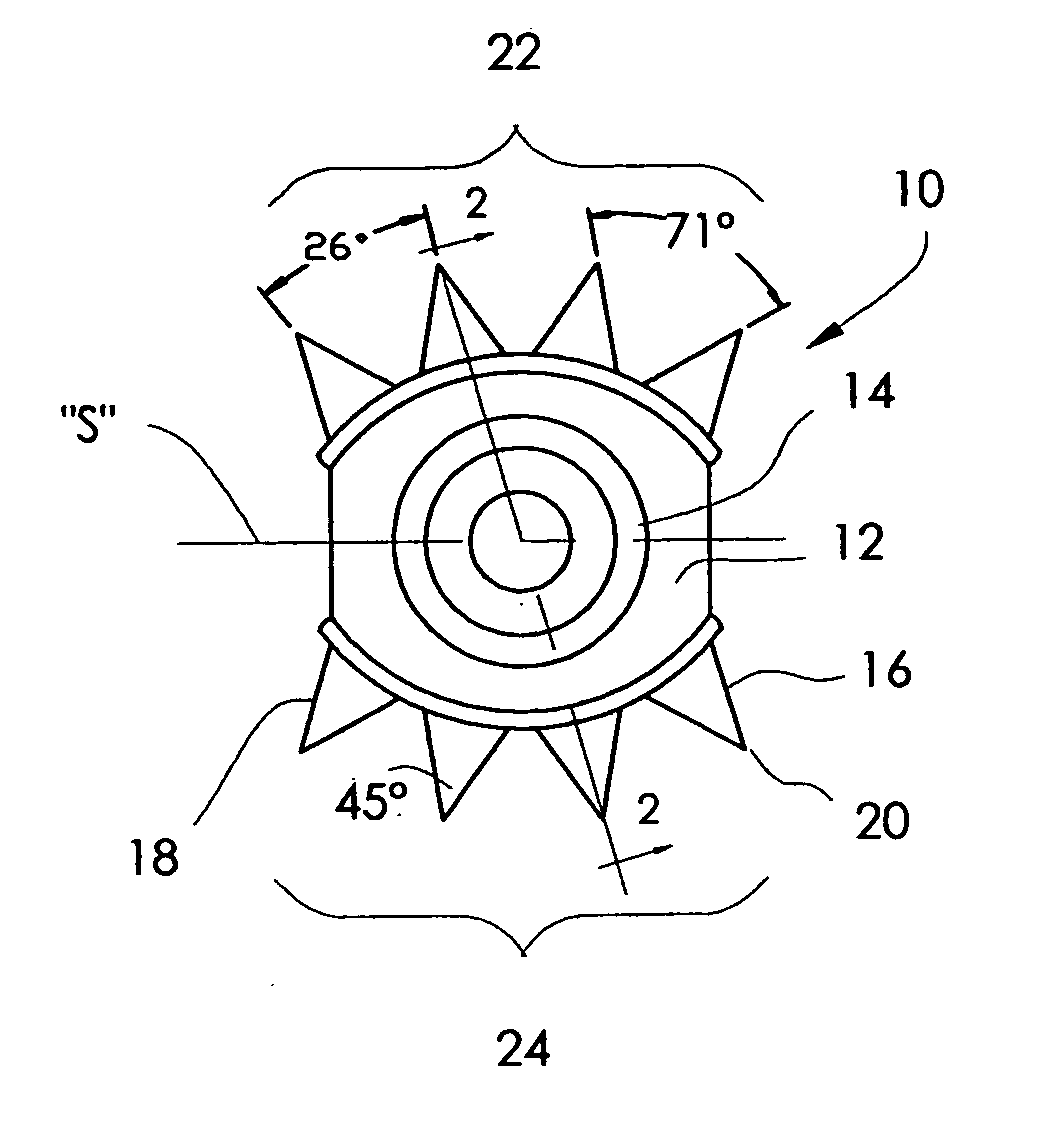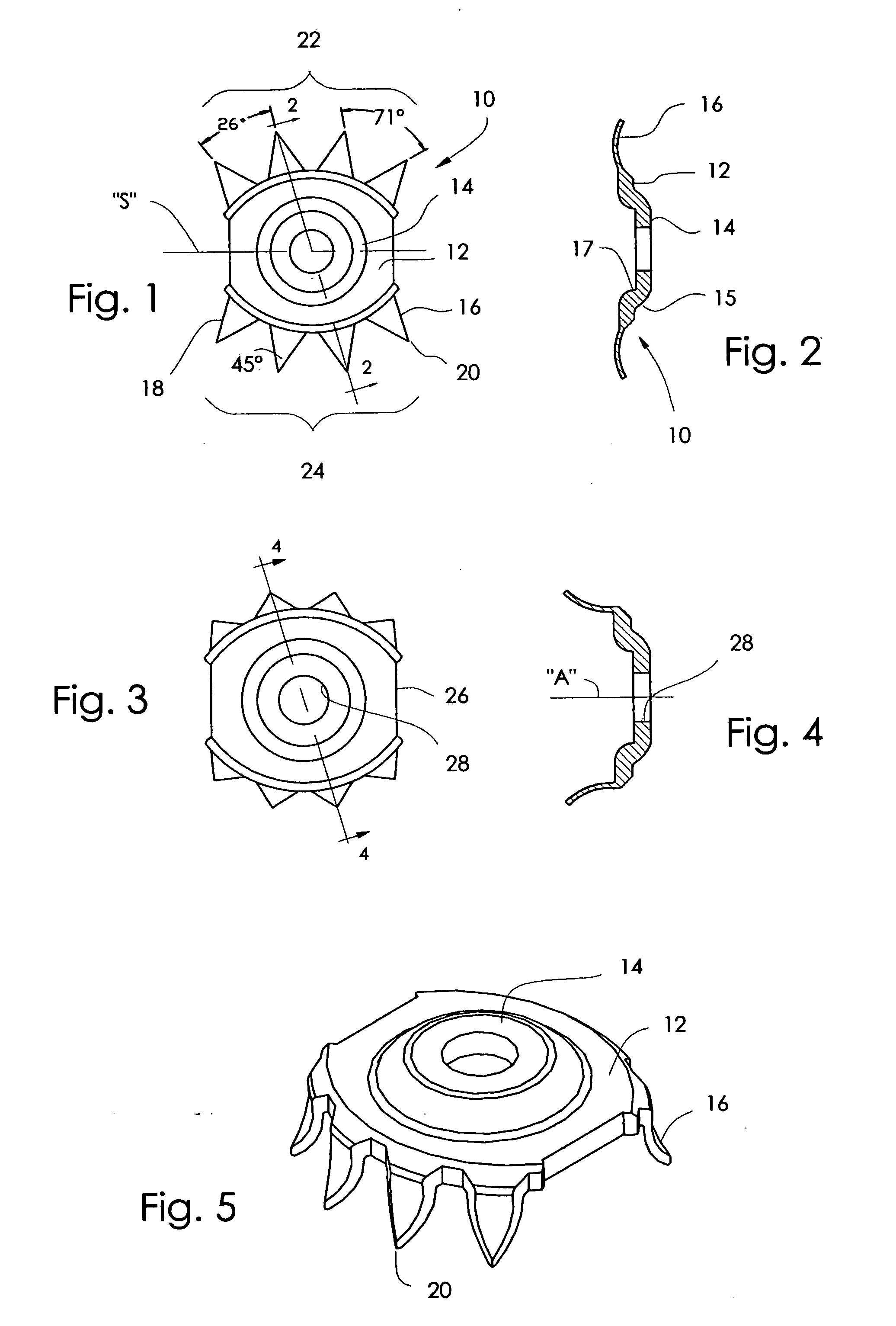Ring binder mechanism with pronged metal anchors
a technology of metal anchors and ring binder, which is applied in the field of ring binder mechanism with pronged metal anchors, can solve the problems of not always providing enough retention force for anchors, rivet heads that are visible on closed binders, and resistance to labeling sheets, so as to minimize the force needed, enhance the appearance of the binder, and avoid the effect of title sheet insertion resistan
- Summary
- Abstract
- Description
- Claims
- Application Information
AI Technical Summary
Benefits of technology
Problems solved by technology
Method used
Image
Examples
Embodiment Construction
[0023] According to this invention, a pronged anchor 10 is formed by stamping a small metal plate into the shape shown in FIG. 1. The pronged plate has an annular outer portion 12, a raised central portion 14 defined by a circular step 15, and a plurality of prongs 16 extending outward from the outer portion. The step also defines a shallow recess 17 on the bottom of the plate. Note (FIG. 2) that the prongs are substantially thinner—actually, less than half as thick as—the rest of the plate.
[0024] Each of the prongs has lateral sides 18 which subtend an angle 45° (FIG. 1) with each other and meet at the prong's tip 20. The included angle between the sides of adjacent prongs is about 71°. The prongs are arranged in two sets 22, 24 which extend in opposite directions from a plane of symmetry “S”. Within each set, the prongs diverge, having equiangular spacing of about 26° (FIG. 1) about respective centers which lie beyond the center of the hole. The prongs do not extend 360° around t...
PUM
 Login to View More
Login to View More Abstract
Description
Claims
Application Information
 Login to View More
Login to View More - R&D
- Intellectual Property
- Life Sciences
- Materials
- Tech Scout
- Unparalleled Data Quality
- Higher Quality Content
- 60% Fewer Hallucinations
Browse by: Latest US Patents, China's latest patents, Technical Efficacy Thesaurus, Application Domain, Technology Topic, Popular Technical Reports.
© 2025 PatSnap. All rights reserved.Legal|Privacy policy|Modern Slavery Act Transparency Statement|Sitemap|About US| Contact US: help@patsnap.com



